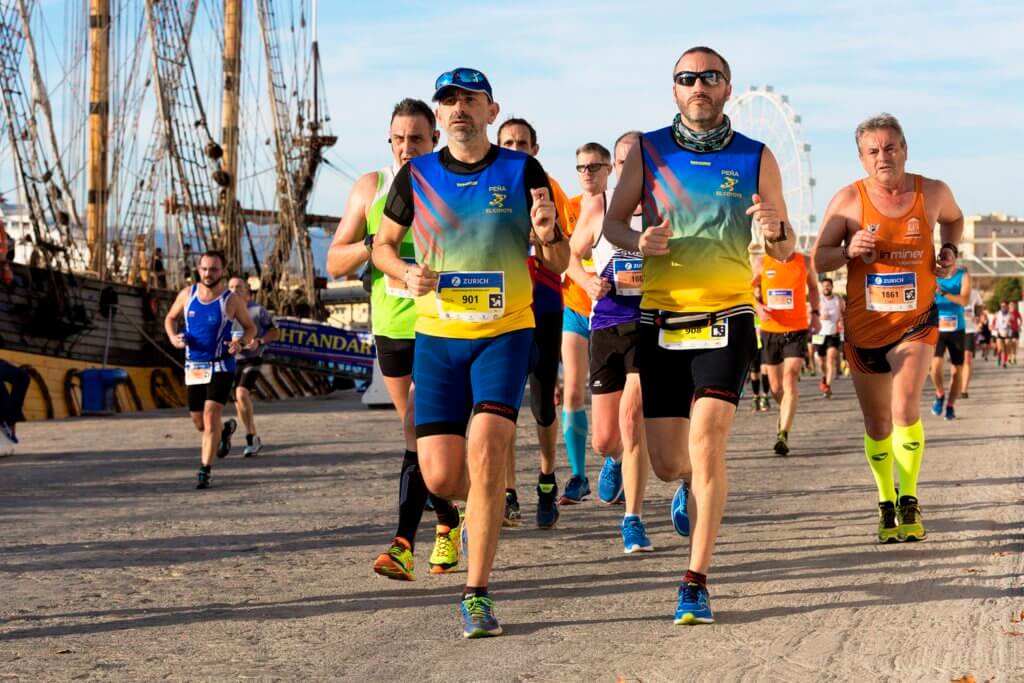For many athletes, running provides a wonderful escape that can relieve stress, boost your mood and keep fitness levels up even in the midst of a crazy, hectic life. If you are somebody who doesn’t necessarily live an active lifestyle but wants to take the first step towards picking up running, there are a few tips and tricks that you should keep in mind to overcome any mental or physical roadblocks that might stand in your way.
Taking on a new sport can put the mind and body under copious amounts of stress, and there are often many questions and anxieties around beginning to run. When can I fit in my runs? How long should I be running? Does it matter how fast I run? Does it matter what shoes I wear? We spoke to John O’Regan, a world-class ultra-runner and guide runner who has represented Ireland in World and European Championships for 24-hour racing, 100km and ultra-trail, to get his advice on how to make the most of your journey when you begin to run. His main advice? Don’t over-complicate it!
1. Start at the Beginning
“For starters, I would say start at the beginning. And that, if you look for a training plan, look for a simple training plan like couch to 5k and follow that from the beginning. Don’t take any shortcuts and see it through,” says O’Regan.
O’Regan has designed some couch-to-5k plans for Run in the Dark. Check them out here!
2.Fit Your Training In Around Your Lifestyle
“Only do what you have time to do. Don’t stress overtraining and try to fit it in around your lifestyle rather than trying to fit your lifestyle around trying to start running. It just won’t happen. Instead of it becoming something that you do to maybe relieve stress, it will only add to the stress.”
On many days, O’Regan uses his lunch breaks to squeeze in his runs. With an hour in the middle of the day free to himself, his midday runs are a welcome break from the monotony of the long work hours.
“Look for windows of opportunity to train throughout the day. It might be that you find that you might not feel like you have a lot of time to train and exercise, but if you do a little audit on your day, you will find that we all have times that we are free.”
Also, if you live close to your work, you could always run for your commute. Why spend frustrating hours in the car in bumper-to-bumper traffic when you can lace up your shoes and spend that time in the fresh air? If you do not have the necessary facilities to shower and get ready for your day, you can always bring your trainers and headphones to run home after work.
“Running home from work is actually a great way to wake yourself up after the day. There’s nothing worse than sitting or standing on the dizzy bus after having a mind-numbing day at work.”
3. Listen to Your Body

“It’s inevitable that injuries can and will happen, so I would say that when you feel anything coming at you, to take a step back and get it sorted rather than go through the pain. Pain is the body’s way of telling you that there is something wrong. So I think, listen to your body, and be proactive in the early stage to actually prevent losing more time through developing a more serious injury.”
But, how do you prevent an injury from happening in the first place? A common problem among beginner runners is their impatience to begin running longer and harder. A couch to 5k training plan will intentionally start runners off slow, but for the runners, the initial workouts will seem to be ‘too easy.’ So, instead of sticking to the plan, runners will run more miles than recommended or start out at a pace too fast to hold for a steady amount of time.
If you pick up the cadence and intensity of your runs before your body has time to adjust to the activity, it can lead to injury.
“Don’t do too much too soon. In the beginning, you have to do a little bit less to allow the muscle, the bones, and the tissue to adapt to this new stress. So you have to let that happen gradually. So in the beginning, you don’t rush it. And then you will get to a certain point where your body gets used to it and then its easy to start doing more, doing more, doing more because your body can handle it.”
Winter Running Kit: The Essential Kit List
4. The Difference Between Good Pain and Bad Pain
If you’re just getting into athletics, you may not be used to the aches and pains that come along with pushing your body past new limits. But, it’s crucial to be able to tell the difference between injury pain and soreness that normally comes with running.
“A bad pain is something that is localized, its one-sided, so if you feel something on your left calf, just your left calf, that’s showing that there is an imbalance between the two sides, so more than likely, that is something that is either an injury or something that’s going to lead to injury.
“Now, if your pain is just sort of a dull ache, it’s in the same place on both sides of your body, so, say it’s in your quads, that is just the pain that is caused by fatigue and it’s when you recover from that kind of pain, that you get stronger you get fitter.”
5. Pre and Post Run
If you are not familiar with the sport of running, you might research the best ways to get out there, leading you down a rabbit hole of premium, 20-minute warm-up plans and advanced stretching techniques to help you win the next Olympic games. O’Regan insists that you do not over complicate it, because sometimes a little can go a long way.
“Don’t stretch before you do anything because if you stretch a cold muscle, chances are you’ll pull something. Your warm-up could be the start of the actual exercise, so just get into a brisk walk, and then start a light jog, and then just take it from there. Ease into it, don’t over complicate it. It’s very, very simple. Put one foot in front of the other and repeat.”
6. Make it Meaningful

“I was always one of those people that didn’t like running, I didn’t really see the point, but then I found something that I wanted to do that involved running and that gave me the motivation to start running. And then I began to enjoy it.”
After a few weeks into the beginning stages of running, many people suffer from a lack of internal motivation to continue. O’Regan suggests that people should find an event such as a charity run that they can train for and look forward to.
“I think rather than just giving yourself a chore of going out an running, pick an event, something that is of interest to you, something that could be meaningful to you. If you can find something that you have some connection with, that can give you the motivation to actually get out and do something because you can be helping someone else benefit from what you’re actually doing.”
Run Towards the New Year: Best Runs to End 2018
7. Don’t Over-Analyze Nutrition
You also do not want to fall for the gimmicks of sports-nutrition foods that swear to give you better results.
“You don’t need to be taking energy bars or gels, what you need to fuel for that activity is what you had for your breakfast, your lunch, your dinner. You don’t need to take in any extra calories to fuel the activity, you already have it inside of you.”
Check out John O’Regan on our Hard as Nails podcast:
Like this? Check out these other articles:











